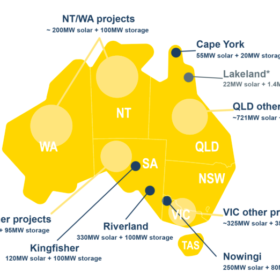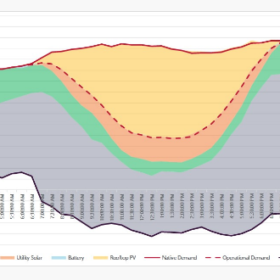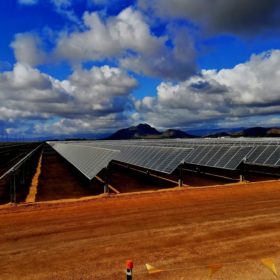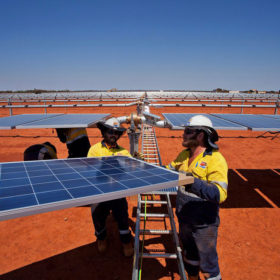Major projects on sale as three Lyon Solar companies enter liquidation
Creditors of Brisbane-based solar and storage developer Lyon Group have announced that three of Lyon Solar’s companies are now in liquidation after their directors failed to meet a deadline. Deloitte is now looking for buyers for the Companies’ projects.
Carbon nanotubes provide a boost to perovskite solar
Scientists at the Tokyo Institute of Technology have developed a carbon nanotube which forms a strong junction with a lead-halide perovskite, improving performance and stability.
US scientists create first rechargeable lithium-carbon dioxide battery
Researchers in Chicago have developed a world first fully rechargeable lithium-carbon dioxide battery, an achievement they claim could pave the way for the use of the greenhouse gas in advanced energy storage systems.
Solar pushes demand in South Australia to new record low
On Sunday, South Australia set a new record for minimum operational demand at 475 MW. Rooftop solar led the way covering 64% of the total demand in the state.
Downer to build Chichester solar+battery project at iron ore mine
Downer has been contracted by Alinta Energy to turn Fortescue Metals Group’s Chichester Hub iron ore operations in the Pilbara region into a solar-powered hub.
Commercial rooftops will lead renewables growth in the next five years
Although the International Energy Agency’s latest renewables report forecasts impressive solar growth there is still a nagging feeling it has produced conservative estimates and the emphasis on sharing costs with grid operators is predictable.
AI-enabled VPP promises up to 100% reduction in home energy bills
With UK success under its belt, Social Energy is set to make Australia’s vast rooftop PV resource pay back more to households and deliver for the grid — think an energy-storage system that uses AI to manage, distribute and trade energy generated by aggregated home solar.
Kudos, PV solutions for the masses and IP wars: the importance of being Q Cells
One of the world’s largest solar cell and PV module manufacturers, South Korea-headquartered Q Cells zealously guards its Tier 1 status, its reputation for quality, and its IP based on 20 years of research and development. Key Account Director Myungsin Shim muses on the future of PV in Australia, and a raft of new Hanwha offerings about to hit the market.
Western Australia iron ore mining hub to run on solar
On the back of a landmark agreement with Alinta Energy, Fortescue Metals will use solar power for up to 100% of its daytime energy needs at the Chichester Hub iron ore operation in the Pilbara region.
Yingli in talks with creditors over break up
The Chinese solar manufacturer today admitted it is in talks with its lenders and strategic investors about a break up of the company after its 2018 annual accounts revealed an apparently unserviceable debt pile. Any strategic investor is likely to constitute a Chinese state-backed bail-out.















